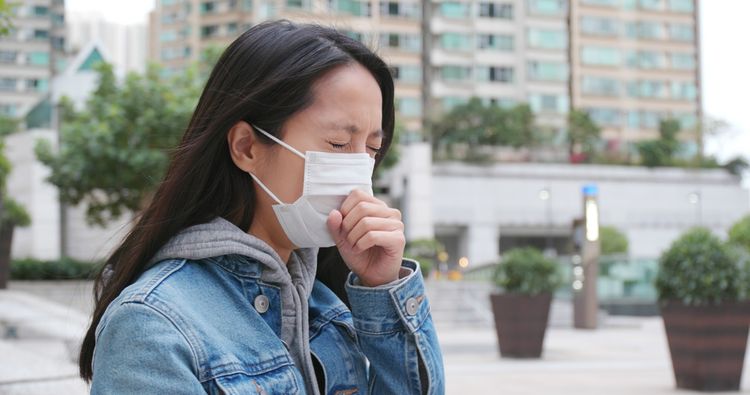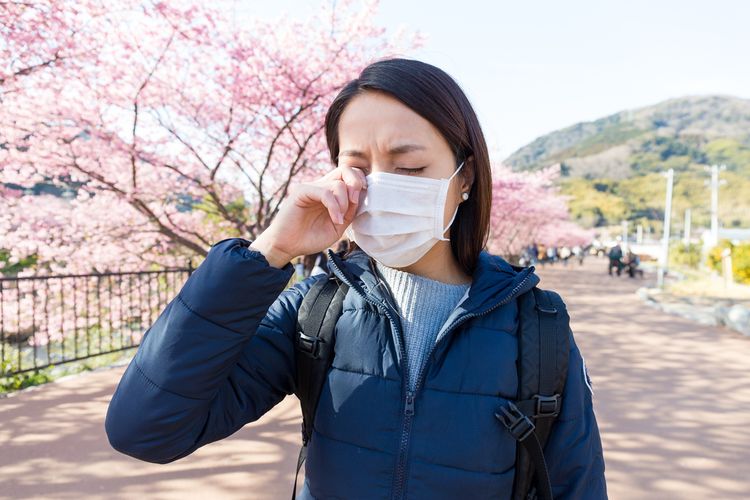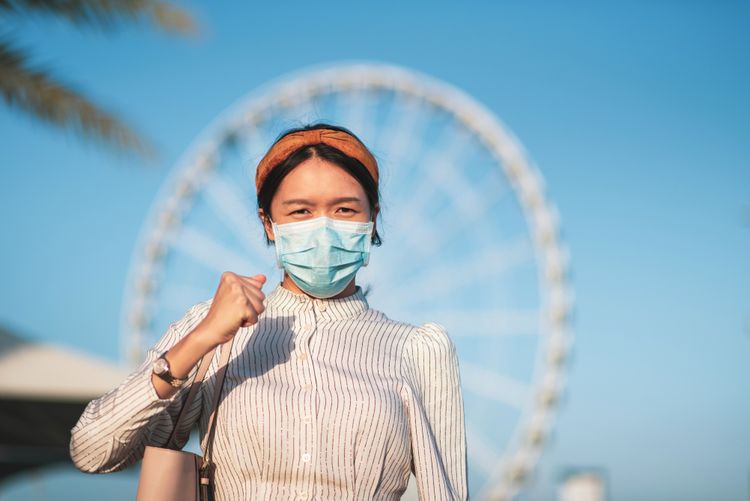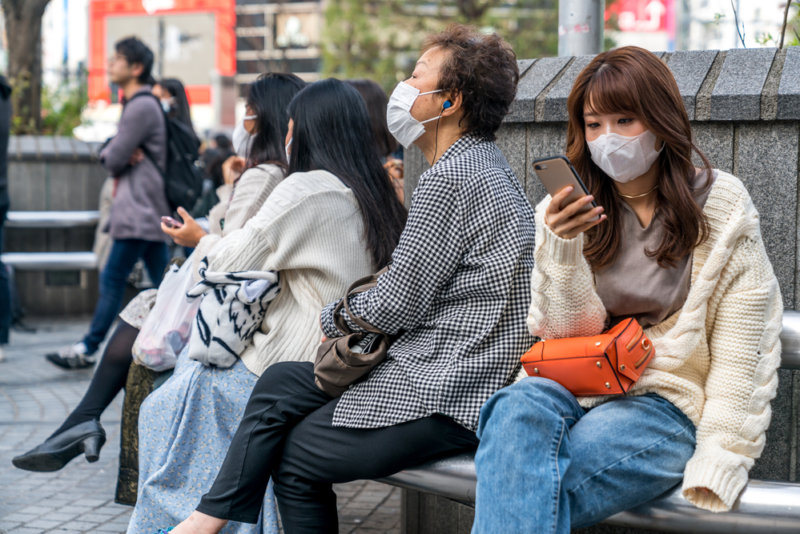Culture shock is very real, and first-time visitors to Japan might encounter bewildering things from the moment they step off the plane in Japan. From heated toilet seats with built-in white noise generators to the seemingly redundant amount of vending machines, there’s no shortage of eye-opening moments to reaffirm that you’re not in Kansas anymore. One local feature that tends to stand out is the prevalence of surgical masks worn by Japanese residents. Read on to find out why they’re so popular and which brands to keep an eye out for should you want to fit in with the locals.
Why Are Masks So Popular?

Despite how it may look, Japan is not populated by a disproportionately large population of medical professionals. While an uncommon sight outside of hospitals in the Western world, surgical masks in Japan are as commonplace as sunglasses in summer or scarves in winter. Though it’s easy to jump to dire conclusions about the reasoning behind this, the main factors driving their widespread usage are much more benign than you may think.
Health and Hygiene

In many parts of the world, employees are allotted a certain number of vacation days for personal use, and sick days for medical issues. For most Japanese businesses however, these two are one in the same. Add to this the fact that most Japanese workers tend to take less than seven vacation days per year and it makes for a culture than frowns upon calling out over a cold.
Though working while under the weather may not be the best idea, Japanese people tend to be highly considerate of those around them, hence the use of surgical masks. In tightly-packed cities such as Tokyo, airborne illnesses can spread quickly, but widespread usage of masks helps to greatly reduce this possibility. While surgical masks are much more effective at preventing the wearer from spreading illnesses rather than contracting them, many healthy people still opt to wear them daily during cold and flu season as an added protection.
Preventing Seasonal Discomforts

Apart from medical issues, surgical masks are often worn as a matter of comfort. The winter air in Japan is incredibly dry, making nose bleeds and painfully chapped lips a regular occurrence. A simple way to combat this is by wearing a mask. The moisture from your breath is then trapped in a confined space, acting as a heater.
Likewise, the beautiful Japanese cedar trees that bloom in early spring are a nightmare for allergy sufferers. While it’s impossible to completely avoid it, surgical masks can cut down on the amount of pollen you inhale while outdoors.
A Quick Cosmetic Fix

Woke up late and didn’t have time to shave or put on makeup? Got a stubborn pimple on your chin that refuses to go away? Many young people in Japan wear masks for those “roll out of bed and go” kind of days. Because of how common they are, surgical masks are the perfect way to cover up without drawing attention to yourself.
What Kind of Mask Should You Buy?
If you’ve wandered into a convenience store or pharmacy in Japan, you will have undoubtedly encountered some of the many surgical mask brands lining the shelves. With so many to choose from, deciding on one can be overwhelming. While it’s understandable to assume that every mask is the same, there are a few things to keep an eye out for. If you’re interested in buying masks during your visit to Japan, here are a few suggestions to point you in the right direction.
B.M.
If you’ve decided to hop aboard the surgical mask bandwagon but don’t want to blend in with the crowd, these activated charcoal masks could be just the thing for you. B.M. (short for Black Mask) are designed for an edgier, stand-out look that are still every bit as functional as their plain white counterparts. As an added benefit, the activated charcoal that is woven into the fabric is said to provide an extra layer of filtering and can even help with bad breath!
Price: Approximately 400 yen for a pack of five masks.
Unicharm Cho-Rittai Mask
One complaint often heard from those not accustomed to wearing surgical masks is that they are uncomfortable. Spend a little time with a mask pressed closely against your mouth and nose and it’s easy to see why. Thankfully, Unicharm has created a line of “3D Masks” that create an area of separation between the mask and your face. If you need a mask that can be worn comfortably all day, they are a safe bet.
Price: Approximately 405 yen for a pack of five masks.
Comfort Guard Pro
For the glasses wearers among us, wearing surgical masks often poses another challenge. Especially in colder months, the warm air from your breath escapes through the top of your mask, causing the lenses of your glasses to become foggy. Rather than constantly wiping them clean, Comfort Guard Pro masks have a small foam pad at the top of their masks to solve this issue. While not visible from the outside, the foam acts as a barrier, preventing air from escaping through the top and keeping your glasses clear.
Price: Approximately 320 yen for a pack of five masks.
Pitta Mask
If allergies are your main concern, look no further than Pitta masks. These washable foam masks are not only comfortable to wear, they also claim to filter out 99% of pollen in the air. For added functionality, some of their masks also boast up to 98% UV protection. They’re a bit pricier than a standard surgical mask, but the high level of filtration and eco-friendly reusability make up for it.
Price: Approximately 500 yen for a pack of three masks.
Nodonu-Ru
If dealing with Japan’s dry winter air is your primary concern, consider the Nodonu-Ru “wet mask”. Each mask comes packaged with a wet filter that is inserted into the front of the mask. When this filter is heated by your breath, it creates a warm steam that helps to keep your nose and throat moisturized for up to ten hours. These masks are perfect for dry hotel rooms where heaters are constantly running, or on long international flights.
Price: Approximately 350 yen for a pack of three masks.
Hi-Luck Neo
Described by the manufacturer as a “luxury mask”, the Hi-Luck Neo is a disposable mask that features adjustable straps for comfort as well as an exhaust valve to allow for easier breathing. In addition to its more comfortable experience, the mask offers N95 level protection, which is among the highest levels offered in consumer-level masks. The premium features are accompanied by a premium price tag, but for all-day comfort and protection, it’s well worth the price.
Price: Approximately 500 yen per mask.
Gonoturn
If you’re on-board with the practical functionality that masks offer but can’t stand the aesthetic, don’t worry, Japan has a cute solution. Aiming to make surgical masks more of a fashion statement, the company Gonoturn has launched a line of washable masks with designs featuring everything from animal faces, to super hero designs, to cartoon characters and everything in-between. For the perfect blend of function and fashion, be sure to give these a try.
Price: Approximately 2,200 yen per mask.
Tip: If you’re shopping for Japanese face masks in Sapporo, be sure to grab this coupon for SATUDORA!
Conclusion
Whether beating hayfever or dealing with a cold, there are plenty of reasons to check out some of Japan’s iconic surgical masks during your next trip here. From general health to fashion accessory, there is guaranteed to be something to fit anyone’s needs and style.
Header credit: Rodrigo Reyes Marin / Shutterstock.com
If you want to give feedback on any of our articles, you have an idea that you’d really like to see come to life, or you just have a question on Japan, hit us up on our Facebook!
The information in this article is accurate at the time of publication.

